A fireplace brings warmth and ambiance to your living room on cold winter nights. But choosing between gas and electric models isn't simple.
Gas fireplaces deliver powerful heat, while electric fireplaces offer easier installation and lower operating costs. Safety features and maintenance needs differ, too.
Let's explore what sets them apart.
Electric Fireplaces vs. Gas Fireplaces: A Comprehensive Comparison
We'll compare electric and gas fireplaces across six key factors: heat output, installation requirements, visual appeal, costs, safety features, and lifespan.
Heat Output and Efficiency
Energy efficiency and heat output are key factors when choosing between electric and gas fireplaces. Each type delivers heat differently, affecting your comfort and heating costs.
Gas Fireplace
Gas fireplaces (both vented and ventless) produce significantly higher BTUs (British Thermal Units) than electric models. They generate between 20,000 and 40,000 BTUs per hour.
This higher BTU output provides more power, creating steady and consistent heat throughout your space. Gas units can comfortably warm 1,000 to 2,000 square feet. The heat radiates in all directions, reaching adjoining rooms through doorways.
Due to their powerful output, gas fireplaces work as primary heat sources. They continue operating during power outages and offer zone heating with built-in blowers.
Electric Fireplace
Electric fireplaces produce between 3,000 and 10,000 BTUs per hour. This lower output heats approximately 400 to 500 square feet.
However, electric models convert nearly 100% of input energy into heat, making them highly energy efficient. No heat escapes through venting, so all warmth stays in your room. They excel at zone heating, targeting specific areas where you need extra warmth.
Electric fireplaces function best as supplemental heaters. They're ideal for bedrooms, home offices, or finished basements where you want to eliminate the chill.
Best for Heat Output and Efficiency: Gas Fireplace
Gas fireplaces win for heat output due to their higher BTUs and ability to warm larger spaces. While electric models efficiently heat single rooms, gas units provide the power needed for whole-home heating.

Installation and Setup
When considering a home upgrade like a fireplace, installation is a crucial factor. The setup process affects your budget, timeline, and how much disruption you'll face.
Gas Fireplace
Installing a gas fireplace is more complex and costs more than an electric unit. However, once installed, you'll have a long-term heating solution for your home.
Gas fireplaces need a gas line run to your chosen spot. Vented models also require a chimney or connection to existing venting. The whole process takes several days and requires professional installers.
Expect workers to cut through walls, floors, or ceilings to route pipes and venting. You'll also need permits and inspections in most areas. Once installed, gas fireplaces become permanent fixtures that can't easily be moved.
Electric Fireplace
Electric fireplaces are much easier to install and can often be done without professional help. You have plenty of style choices too—wall-mounted units, freestanding models, or fireplace inserts.
Since electric fireplaces don't produce real flames or emissions, they don't need venting, chimneys, or gas pipes. Most units simply plug into a standard outlet. Wall-mounted versions just need a few screws.
Before installing, double-check that your electrical circuit can handle the load. Larger models might need dedicated circuits to avoid tripping breakers.
Best for Installation and Setup: Electric Fireplace
Electric fireplaces are the clear winner for easy installation. Most work right out of the box—just plug in and enjoy. You can also move them between rooms or take them when you relocate.

Maintenance and Safety
Maintenance and safety are essential factors when choosing between these fireplace options. Each type has different requirements and risks to consider.
Gas Fireplace
Gas fireplaces need more regular care and professional attention. You'll clean the glass and surroundings monthly, plus schedule yearly inspections to ensure safe operation.
Safety requires extra precautions, too. Install carbon monoxide detectors on every level of your home. Keep smoke detectors nearby as well. The glass front gets dangerously hot during use, so watch kids and pets carefully. Gas leaks and carbon monoxide exposure are real risks if maintenance slips.
Electric Fireplace
Electric fireplaces need little to no maintenance. Just wipe down surfaces and clear out dust occasionally. Check power cords and outlets periodically for any wear or damage.
These units are much safer overall. No real flames means no carbon monoxide or gas leak worries. The surface stays cool to the touch, making it kid and pet-friendly. While electrical fires are possible with any appliance, the risk is minimal with proper cord care.
Best for Maintenance and Safety: Electric Fireplace
Electric fireplaces take the win here. They skip annual inspections, special detectors, and constant safety concerns. Just basic cleaning and cord checks keep them running safely for years.
Appearance and Ambience
Both fireplace types offer various designs and styles to match your home's decor. The visual differences between them might surprise you.
Gas Fireplace
Natural gas fireplaces produce authentic flickering flames that look and feel like real fire. This creates a comfortable, warm atmosphere in your home.
Most units let you customize flame height, giving you the feel of a traditional wood-burning fireplace. Turn flames higher for cozy winter nights or lower for gentle ambiance.
Gas fireplaces offer plenty of customization, too. Pick from different log sets, trims, finishes, and more to match your style perfectly.
Electric Fireplace
Electric fireplaces provide similar design variety with options to match any space. While the flames aren't real, modern technology creates surprisingly realistic effects using mirrors and LED displays.
The unique advantage is color flexibility. Change flame colors from orange to blue, purple, or green with your remote. You can also enjoy flames without heat—perfect for summer nights when you want the cozy look without the warmth.
Best for Appearance and Ambience: Gas Fireplace
Gas fireplaces take the win for authentic ambiance. Their real flames and adjustable height create that traditional fireplace feeling you can't quite replicate with technology. The natural dance of actual fire brings unmatched warmth to any room.

Costs
Regarding costs, you want to choose a fireplace that fits both your budget and home.
Gas Fireplace
Installation costs for gas fireplaces can be more expensive than other types. In some cases, a new gas line needs to be installed. Total costs typically range from $2,700 to $15,800, including the unit, labor, venting, and gas piping.
The final price varies by region and depends on your specific situation. Vented models cost more than ventless. Retrofitting existing homes runs higher than new construction.
Operating costs depend on local gas prices and how often you use it. Gas fireplaces provide strong heat output for larger spaces, but the initial investment can be significant.
Electric Fireplace
Electric fireplaces don't require gas, but consider electricity costs and frequency of use. They're generally more affordable to install and operate than gas models. Installation ranges from $200 to $2,200, with most homeowners spending around $1,000.
These units are easier to install. Many models can be self-installed and plugged into standard outlets, making them budget-friendly for homeowners who don't need professional installation.
Best for Costs: Electric Fireplace
Electric fireplaces provide the best value when factoring in maintenance, operation, and installation costs. Their affordability and ease of installation make them attractive for many households, especially in smaller spaces or as secondary heat sources.

Lifespan
The lifespan of your fireplace depends on which type you choose and how well you maintain it.
Gas Fireplace
Gas fireplaces feature sturdy construction with fewer electronic parts. With annual inspections and occasional part replacements, quality units last 15 to 25 years or more. Many come with 5-10 year warranties on major components.
Electric Fireplace
Electric fireplaces typically last 10 to 20 years. Their lifespan depends on model quality and electronic components like heaters and LED lights, which wear out faster with heavy use. Warranties usually cover 1-3 years.
Best for Lifespan: Gas Fireplace
Gas fireplaces win with 15-25 year lifespans. They're built heavier to handle real flame temperatures. Daily use affects both types, but gas units handle frequent operation better than electric models.
How to Choose Between Gas vs. Electric Fireplaces
Both gas and electric fireplaces add wonderful warmth to your home. Your best choice depends on several key factors that match your specific needs.
Choose a Gas Fireplace If:
You want the most realistic flame experience with powerful, consistent heat for large spaces. Gas makes sense when your home already has a gas line or when electricity costs run high in your area.
These units work as primary heat sources, warming entire floors efficiently. Just remember the glass gets very hot—keep kids and pets at a safe distance during operation.
Choose an Electric Fireplace If:
You need simple installation and maximum safety at an affordable price. Electric units are perfect for DIY installation without gas lines or special venting.
While they heat smaller areas and lack real flames, electric fireplaces offer unbeatable convenience. The cool-touch surface makes them worry-free around children and pets. They work great in apartments, bedrooms, or any space where you want supplemental heat without major renovations.
Our Favorite Electric Fireplaces
Bower Mid-Century Modern Fireplace TV Stand for TVs up to 75″
This stylish unit combines mid-century design with practical storage. The hand-woven rattan doors and sturdy wood frame create a retro-modern look that fits today's homes.
Key features:
- Ample storage with top drawers, two center shelves, and side cabinets
- Built-in cable management through rear wire holes
- 36-inch fireplace with 1400W heater (warms 400 sq ft)
- Four flame brightness levels that work without heat
- Remote control with 1-8 hour timer
Lenore Modern Fireplace TV Stand for TVs Up to 80 Inches
For traditional homes, this classic mantel design features crown molding and fluted columns. The timeless style complements formal living rooms beautifully.
Key features:
- Six open bookcase-style shelves for display
- 28-inch, 1400W heater for 400 sq ft spaces
- Realistic flames operate with or without heat
- Automatic shut-off prevents overheating
- Classic design elements enhance traditional decor
23" Electric Fireplace Insert
Transform existing furniture or fireplace openings with this versatile insert. Perfect for updating old TV stands or unused fireplaces.
Key features:
- Fits most entertainment centers and fireplace openings
- 1400W heater produces 5,000 BTUs
- Remote and touch panel controls
- Four flame brightness settings
- CSA/UL certified with 50,000+ hour LED lifespan
FAQs
Should I replace my gas fireplace with an electric fireplace?
It depends on your priorities. Electric fireplaces offer lower maintenance, better safety around kids and pets, and flames without heat in summer.
Converting is fairly simple—a professional caps the gas line and installs an electric insert in your existing space.
However, if you need powerful heating for large areas, keep your gas fireplace. Gas units provide more consistent warmth than electric models.
Do electric fireplaces really warm a room?
Yes, electric fireplaces effectively warm single rooms. Standard units produce about 5,000 BTUs, enough for 400 square feet.
Some models can be hardwired to higher voltage circuits, doubling their output to warm 800 square feet or more. They work best as supplemental heat sources rather than primary heating for entire homes.
Do electric fireplaces need to be vented?
No, electric fireplaces don't require venting. They produce no smoke, fumes, or combustion byproducts since they don't burn anything. This makes installation simple and flexible—you can put them in any room, including apartments, bedrooms, or basements. No chimney or special ventilation needed.
Which fireplace is more cost-effective to run?
Electric fireplaces are more cost-effective overall. They convert 100% of electricity into heat and require minimal maintenance. While operating costs vary by local utility rates, the lower installation and upkeep expenses make electric fireplaces the budget-friendly choice for most homeowners.
Conclusion
Your perfect fireplace depends on what matters most to you. Consider your heating needs, available space, budget, and style preferences. A gas fireplace offers powerful heat and real flames. An electric fireplace provides easy installation and better safety.
Apply what you've learned here to your specific situation. The right choice will serve you well for years to come.
Read More:
How to Enhance the Electric Fireplace Ambiance?
Can You Put an Electric Fireplace in a TV Stand?
How To Clean Your Electric Fireplace TV Stand?
Do Electric Fireplaces Give Off Heat?



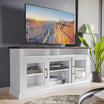






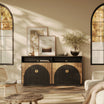
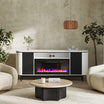
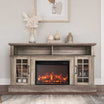
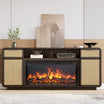
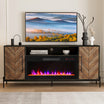
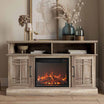
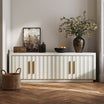
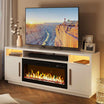
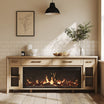
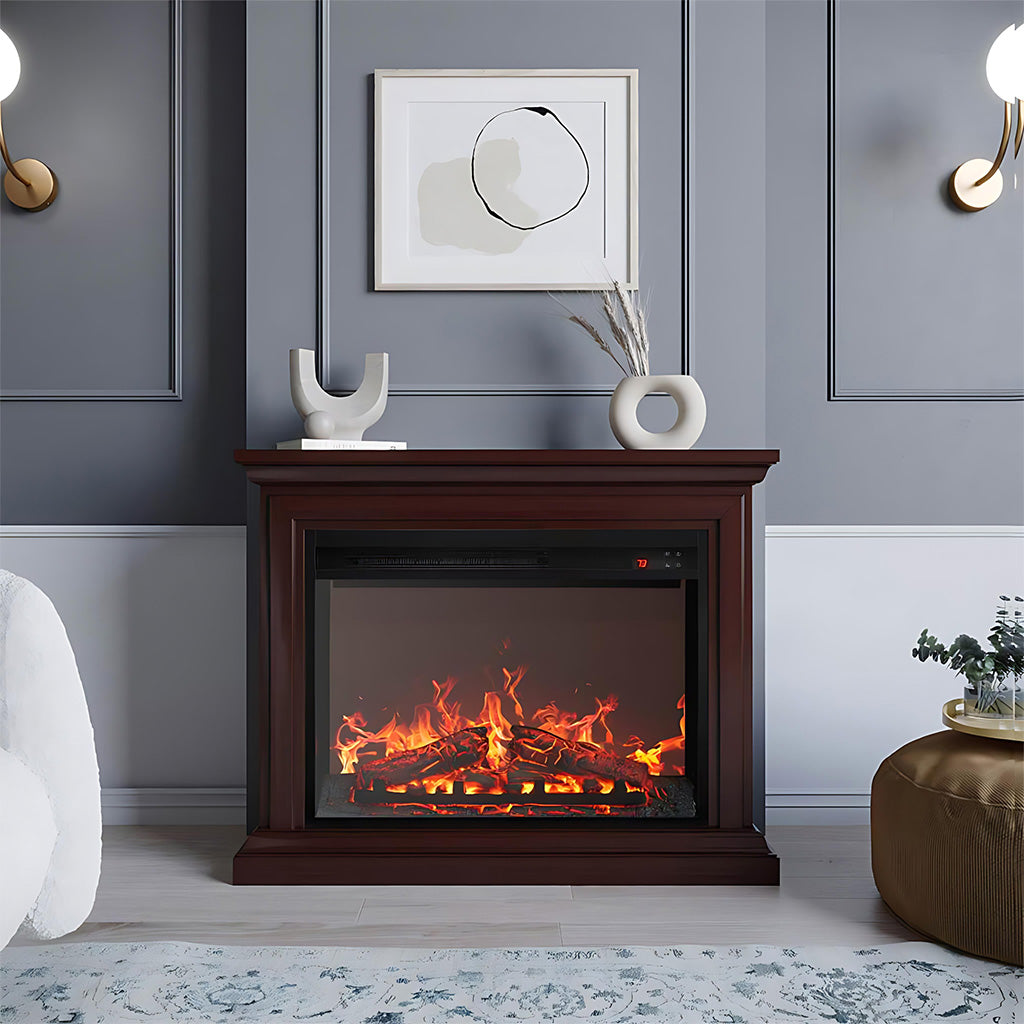

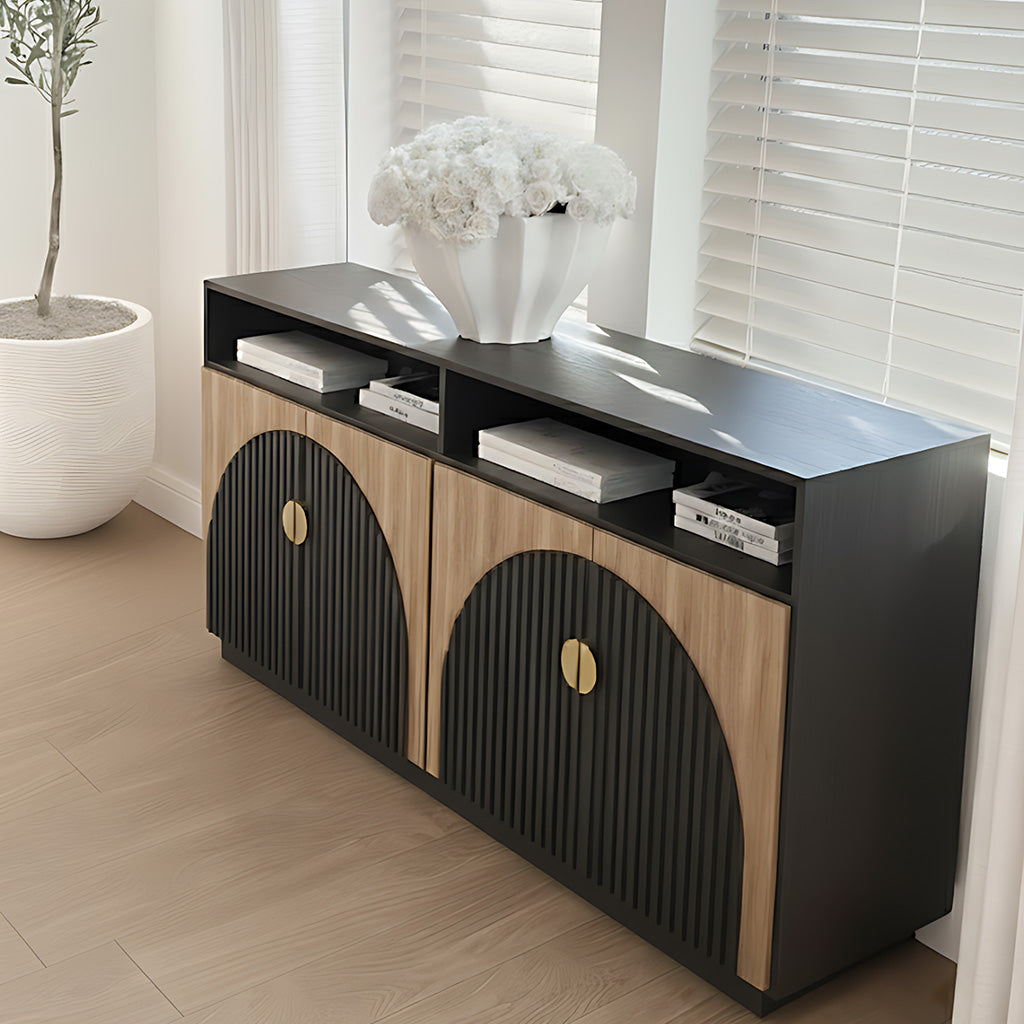
Leave a comment
This site is protected by hCaptcha and the hCaptcha Privacy Policy and Terms of Service apply.